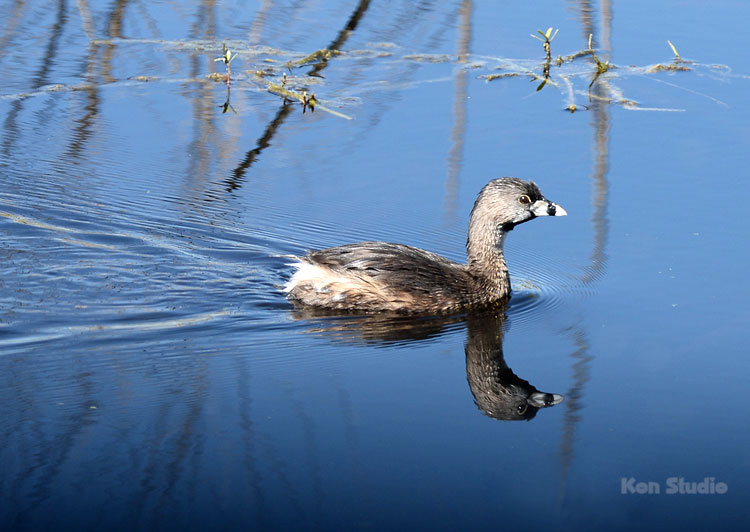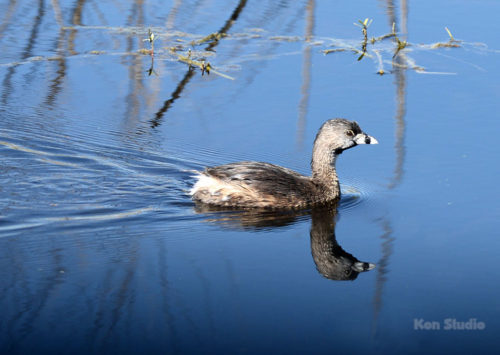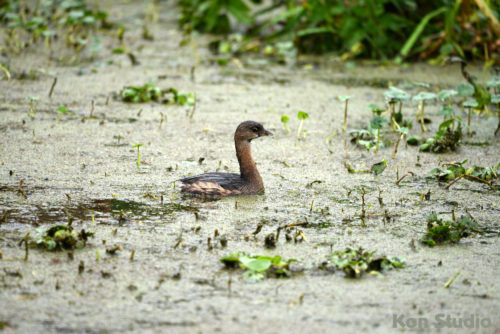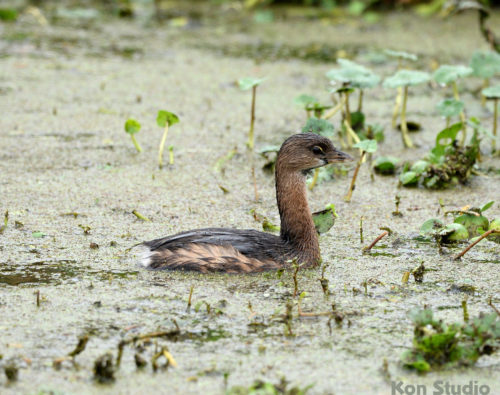The Pied-billed Grebe (Podilymbus Podiceps) is common across the U.S. The breeding range consists of some northern parts of the U.S. and some southern parts of Canada. They can be found year-round in the U.S., Mexico, the Caribbean Islands, and most of southern South America. They have compact bodies with virtually no tails and slender necks. Their heads are blocky with short, thick bills. They measure about 11.8-15.0 inches with a wingspan of 17.7-24.4 inches and weigh about 8.9-20.0 oz. The Pied-billed Grebe is brown, with slightly darker plumage above and tawny-brown plumage on their underparts. During spring and summer, the crown and nape are dark, with a black throat. When breeding, the bill is whitish with a black band in the middle but is yellow-brown otherwise. Juveniles have striped faces.
Habitat types include freshwater wetlands, wet fields, bays, sloughs, marshes, lakes, slow-moving rivers, and sewage ponds. Pied-billed grebes forage in the water among aquatic plants and beneath mats of floating vegetation. This water bird generally dives for food and occasionally plucks insects from foliage, the water’s surface, or the air. They are opportunistic feeders and will consume a wide variety of prey items, large and small, though they mainly eat crustaceans and small fish, crushing them with their stout bills and strong jaws. To escape danger by “crash-diving,” making a splash by plunging in the water with head and tail raised above the belly. They can also dive headfirst, or sink quietly out of view leaving no trace. Another cool behavior that they display to avoid danger is by submerging, crocodile-style, just showing their eyes and nostrils above water.
This bird needs a long running-flapping start to take off the water. This species is of low conservation concern as its population is widespread and fairly common.





Recent Comments